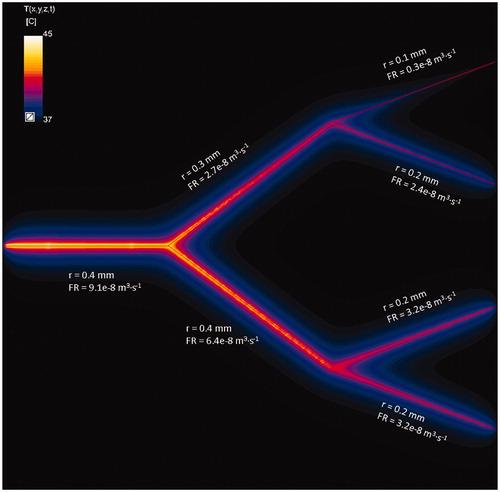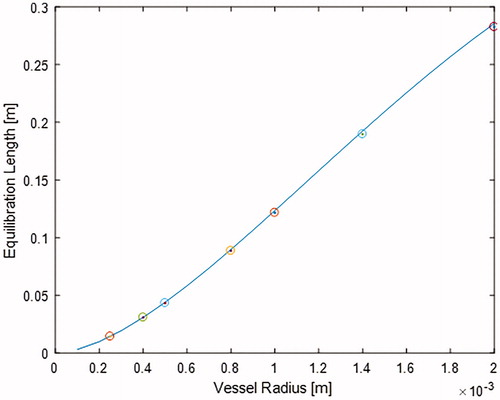Figures & data
Figure 1. Left: vessels skeleton and right: skeleton and connectivity. In this example, green points are starting points, red points are end points and purple points are bifurcations. The color of the squares around the points indicates that the point belongs to a separate tract of the vasculature.
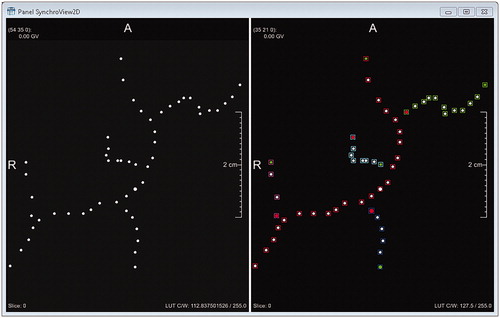
Table 1. EM and thermal simulation properties of tissues.
Figure 2. An example result of the graph-cut vessel segmentation algorithm. Pre-processed coronal slice of the MRA image of a patient with vessels segmentation color overlay in purple (left), and the skeletonization of the arterial vessel tree (right).
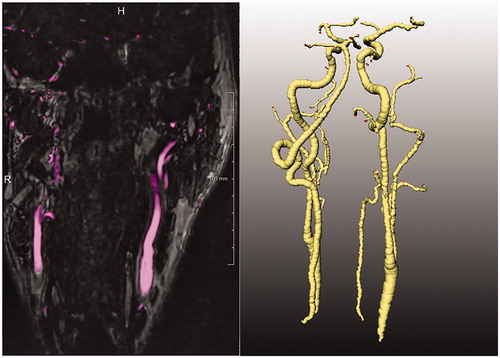
Figure 3. Maximum temperatures in the healthy tissue reached in PBHE + DIVA models with the same input powers as in PBHE models. The maximum temperature in the healthy tissue was 44 °C in the PBHE model.
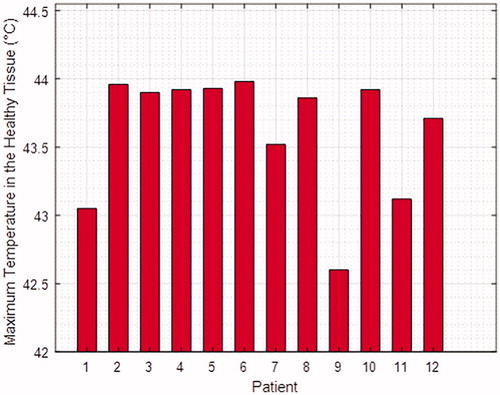
Figure 4. Differences in HTP quality parameters in the CTV (a) ΔT90 (|ΔT90avg| = 0.16 °C), (b) ΔT50 (|ΔT50avg| = 0.30 °C) and (c) ΔT20 (|ΔT20avg| = 0.33 °C). ‘*’ next to the patient number denotes a target volume that includes a part of the vessel tree.

Figure 5. Example temperature distribution maps overlaid on CT images for PBHE (left), and DIVA (right).

Figure 6. Principal verification benchmark: a coaxial setup involving a straight vessel inside a tissue cylinder.

Table 2. Basic model parameters (in accordance with Table 1 in [Citation24]).
Figure 7. (a) Theoretical and simulated temperature along the vessel for different bucket densities. Theoretical and simulated Leq for a bucket density of (b) 5000, (c) 2500 and (d) 1250.
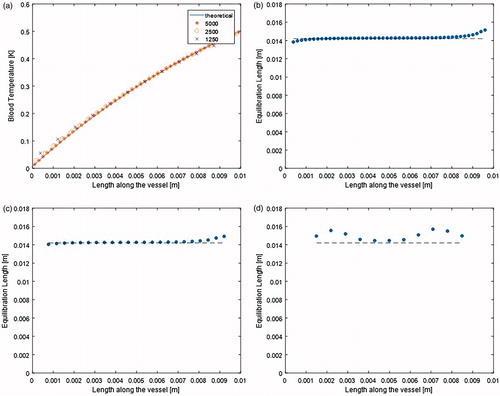
Figure 9. Temperature profile along three connected vessel segments (computed and theoretical; left) and Leq (right).
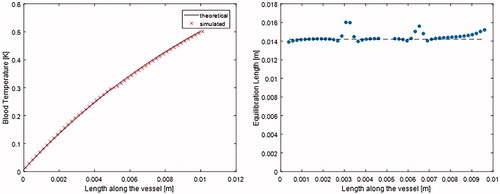
Figure 10. DIVA benchmark illustrating branching with symmetric and asymmetric flow-rate division. Red straight lines are indicating the vessel centerlines.
